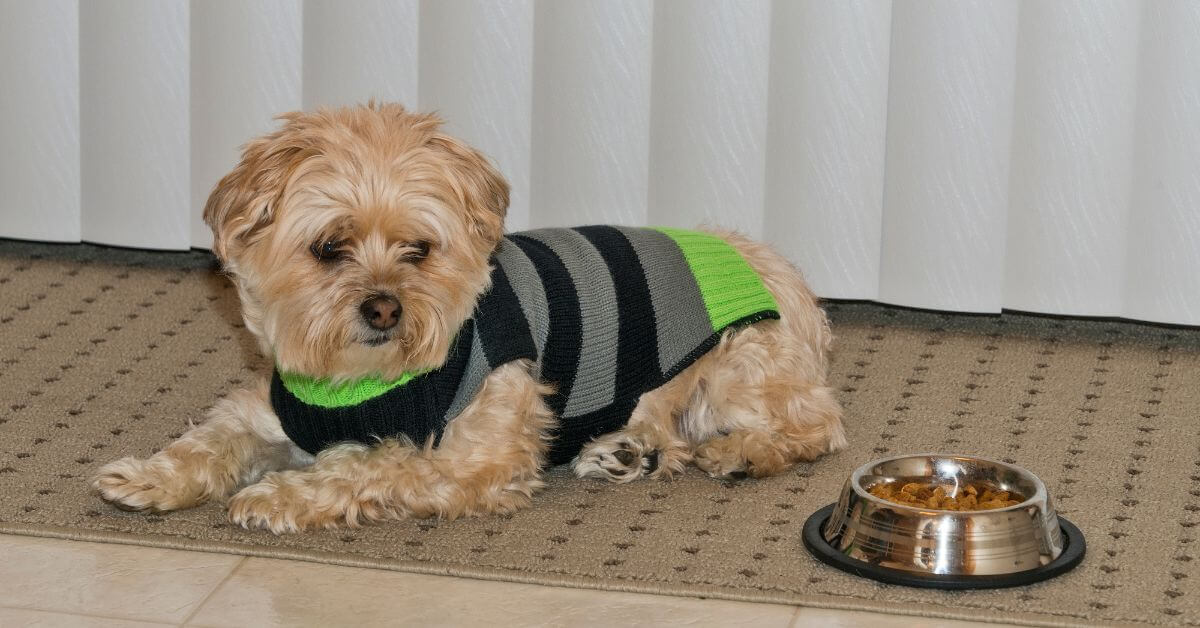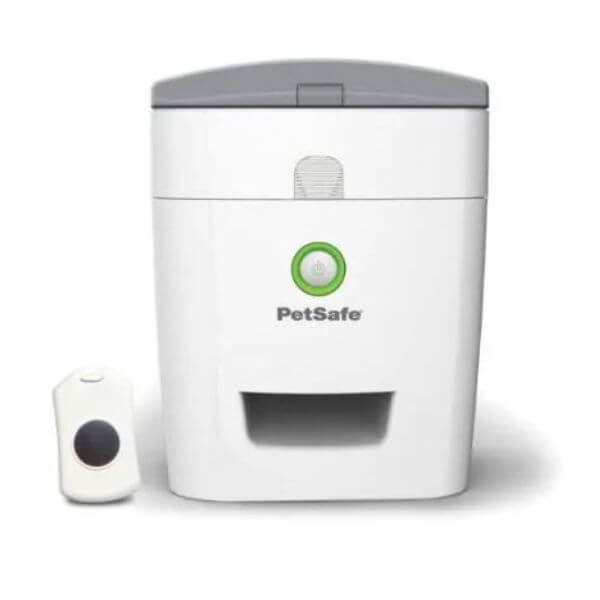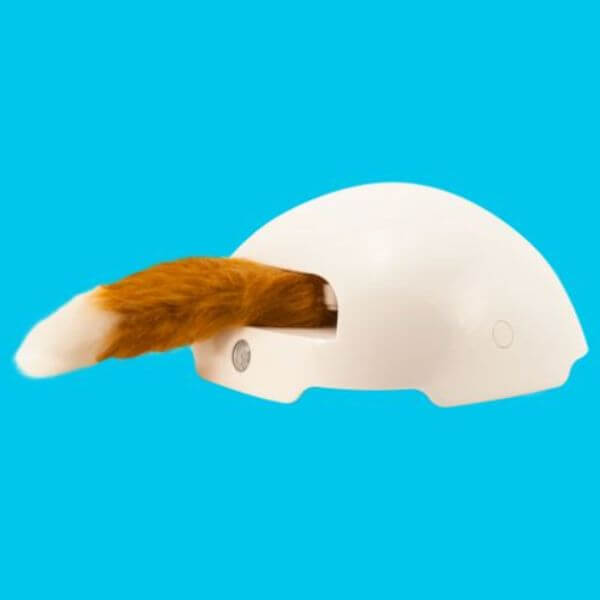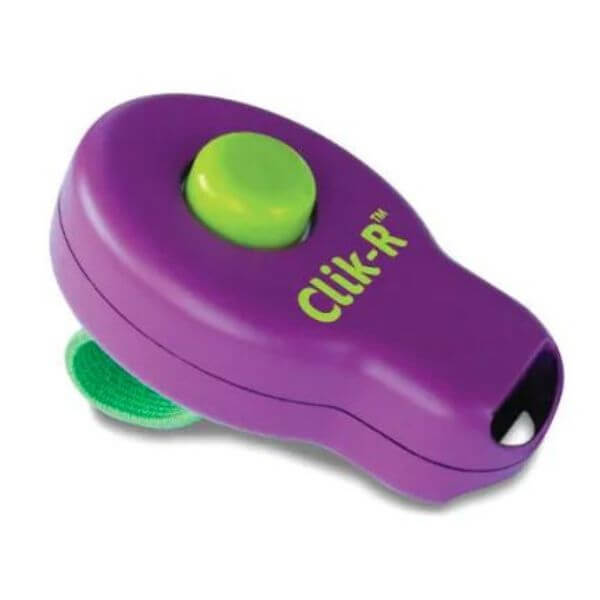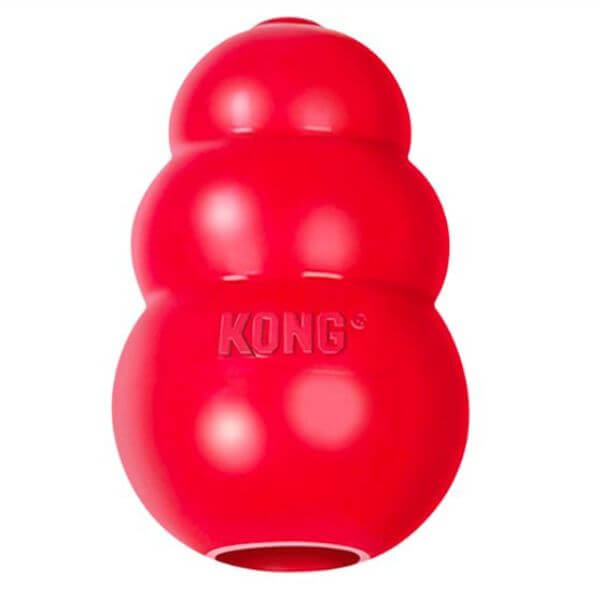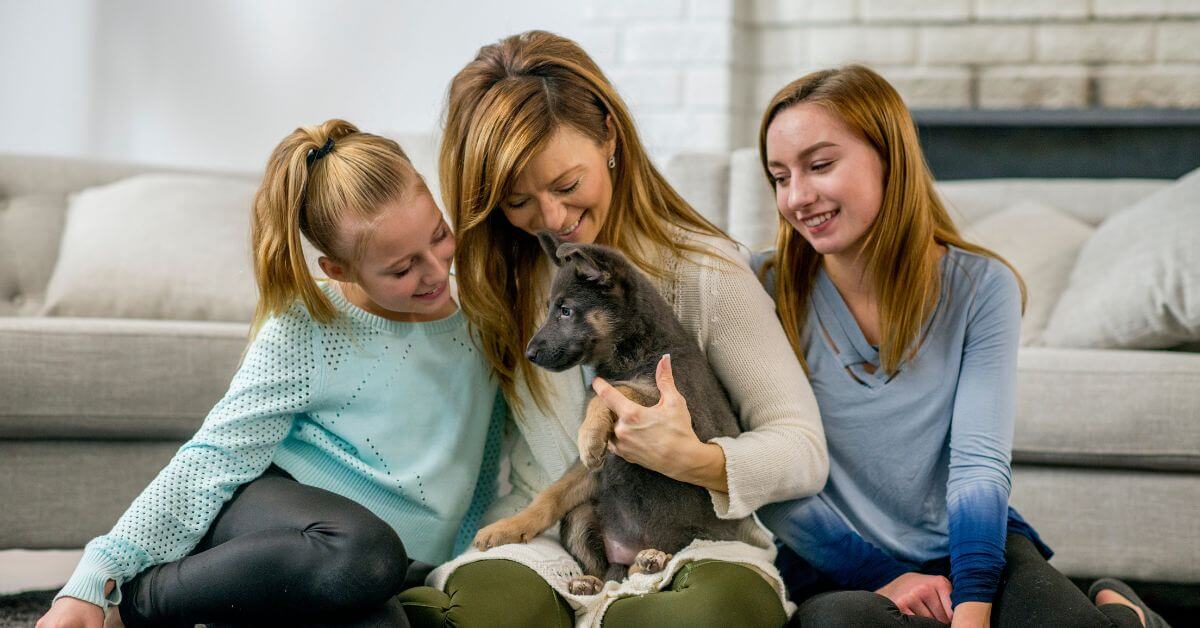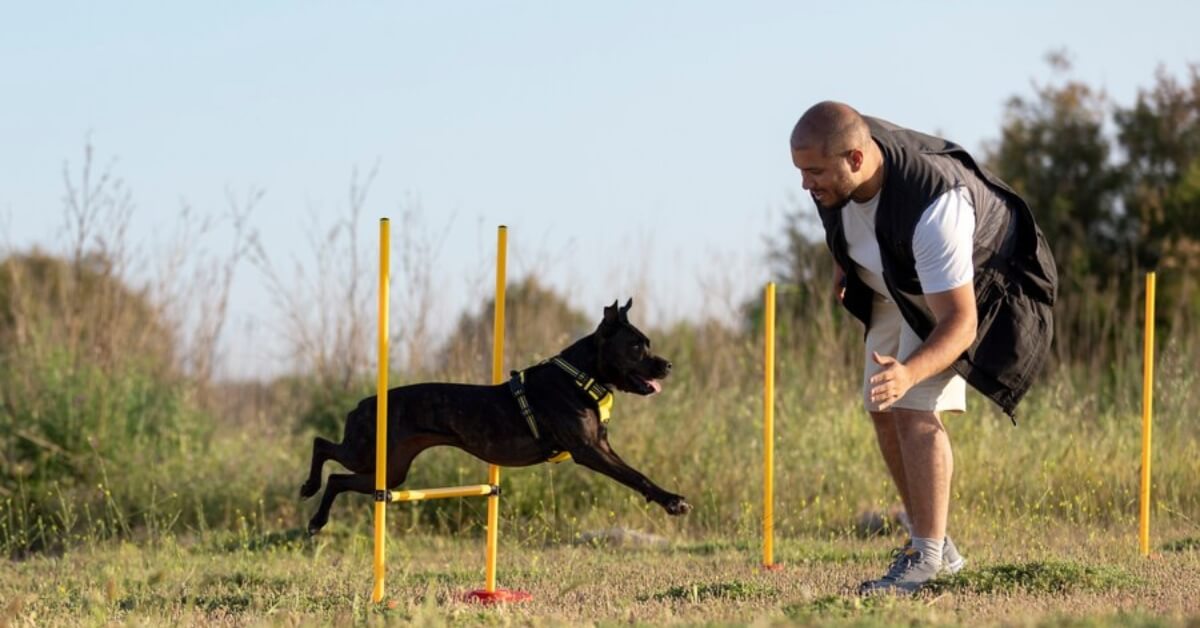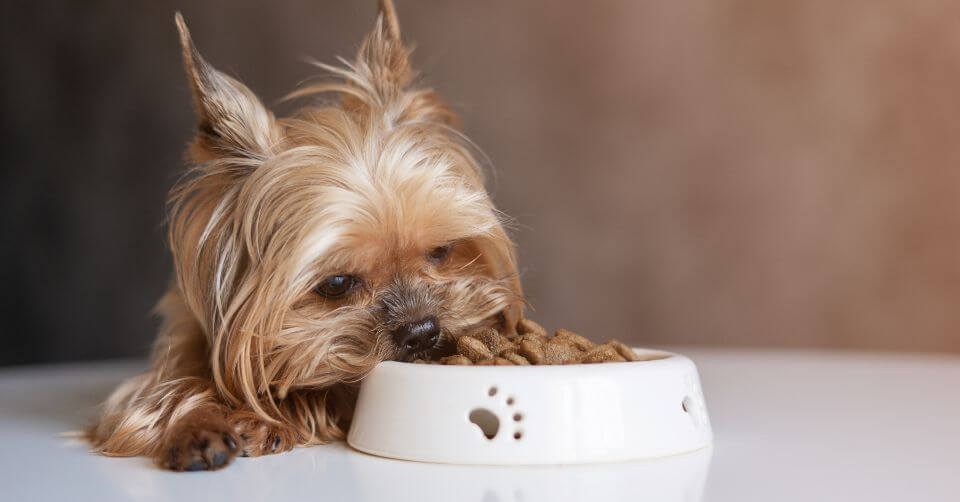
Understanding the Food Guarding behaviour
-
Survival Instinct
In the wild, food is a limited resource, and animals must protect it to survive. While domestic dogs have a guaranteed meal, some may still display food guarding behavior due to this ingrained instinct.
-
Fear of Loss
Dogs may guard their food out of fear of it being taken away. This could be a learned behavior from past experiences where their food was taken while they were eating.
-
High-Value Resource
The behavior can be particularly noticeable if the food or treat is of high value to the dog. This could be their favorite meal, a special treat, or a chew toy filled with treats.
-
Competition
In a multi-dog household, dogs may guard food due to competition from other pets. Even if they’re fed separately, the mere presence of other dogs can trigger guarding behavior.
-
Stress and Anxiety
Dogs experiencing stress or anxiety might display food guarding behavior. Changes in the household, adding new pets, or even changes in the feeding schedule can trigger this response.
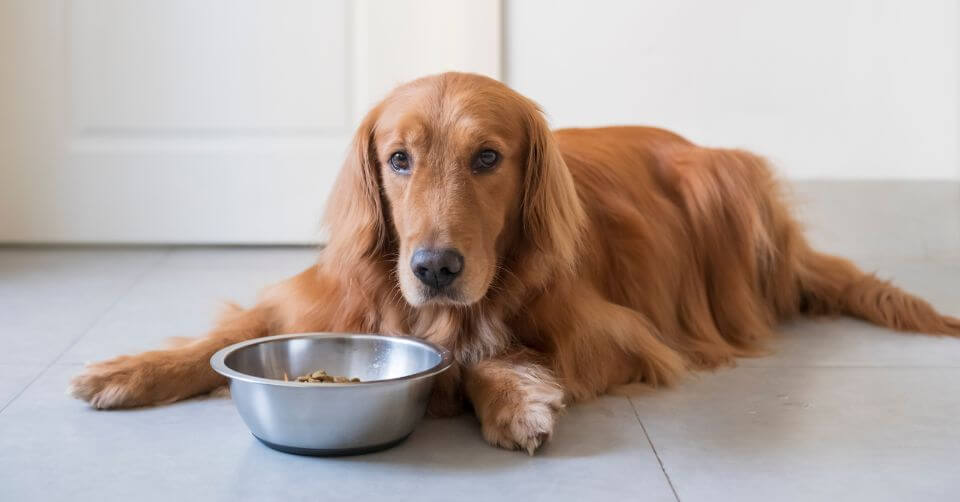
Signs of Food Guarding Behavior in Dogs
-
Change in Body Language
This is one of the most common signs. When approached during feeding, a dog might stiffen their body, stand over the food more protectively, or eat more quickly.
-
Growling or Snarling:
Vocal warnings like growling or snarling are often used by dogs to signal that they don’t want anyone near their food.
-
Snapping or Biting:
Some dogs may resort to snapping or even biting if they feel their warnings have been ignored.
-
Guarding or Hoarding Food:
Some dogs might take food to another room to eat in solitude, or they might start hiding food for later consumption.
-
Lunging or Charging at Approaching People:
A dog that moves aggressively towards anyone approaching them while they’re eating is likely exhibiting food guarding behavior.
-
Showing the Whites of Their Eyes:
This is also known as “whale eye.” When a dog is guarding their food, they may keep their head down while their eyes look up at anyone approaching, showing the whites of their eyes.
-
Exhibiting Anxiety When People Are Near Food:
Dogs might display signs of anxiety, such as pacing, whining, or excessive salivation, when someone is near their food or feeding area.
-
Becoming Aggressive Toward Other Pets:
Food guarding isn’t just directed at humans. Dogs may also show aggressive behavior towards other pets in the household if they approach while they’re eating.
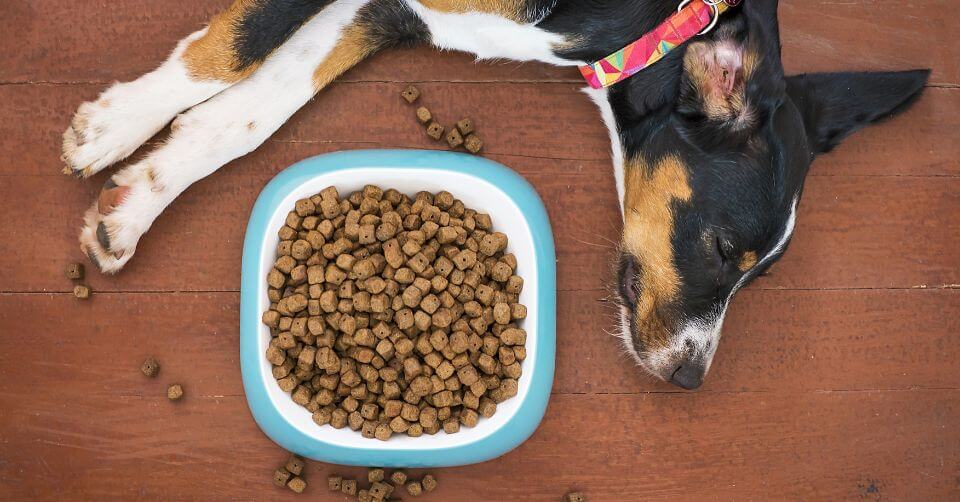
Triggers of Food Guarding Behavior
-
Changes in Environment:
Just as we humans get jumpy with unexpected changes in our surroundings, dogs are not fans of sudden shifts either. Moving to a new house, bringing a new pet into the family, or even rearranging furniture can make your pooch feel insecure. This insecurity can manifest itself as food guarding as your furry friend tries to ensure that at least his food remains his own!
-
Irregular Feeding Schedule:
Dogs are creatures of routine. When their feeding schedule gets out of whack, they can become anxious, worrying about when their next meal will come. This can trigger food guarding behavior as they try to ensure they get their fair share.
-
Competition for Resources:
If you have more than one pet at home, competition for resources, including food, toys, and even your attention, can trigger food guarding behavior. It’s a dog-eat-dog world after all, and your pet might feel the need to protect what’s theirs!
-
Previous Trauma or Neglect:
Dogs who have been previously neglected, starved, or had to scavenge for food are more likely to guard their food. It’s their survival instinct kicking in, a painful reminder of times when food was hard to come by.
-
Health Issues:
Sometimes, the cause of food guarding could be physical rather than psychological. Dental problems, digestive disorders, or any health issues that cause your dog discomfort or pain during eating might make them guard their food more aggressively. In such cases, it’s best to consult a vet for guidance.
-
Breed or Temperament:
Some breeds are more prone to food guarding than others. Similarly, dogs with anxious or defensive temperaments might display this behavior more frequently. Knowing your dog’s breed traits and personality can help you understand and address this issue better.
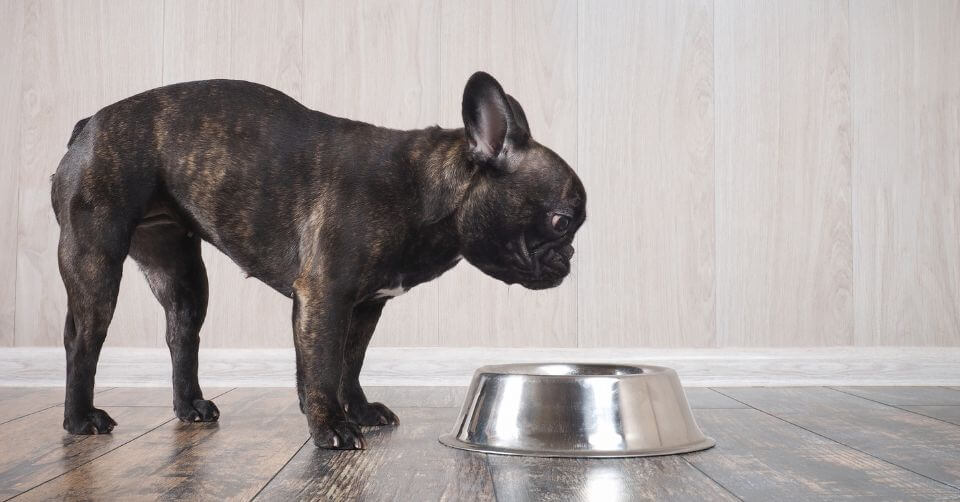
How to Handle Food Guarding: Do’s and Don’ts
Do’s
-
Stay calm:
Don’t forget, our furry friends are pretty darn good at picking up on our feelings. If you’re tense or anxious, they’ll likely mirror your emotions. So, stay as cool as a cucumber and approach the situation calmly.
-
Respect their space:
While your dog is eating, give them some room. Nobody likes to feel crowded while chowing down on their dinner, right?
-
Associate your presence with positives:
Help your dog understand that your presence near their food is a good thing. You can do this by occasionally adding tasty extras to their bowl while they’re eating. In their eyes, your approach will soon mean good news – extra yummy food!
-
Seek professional help:
If the food guarding seems severe, don’t hesitate to contact a professional. Canine behaviorists have the knowledge and experience to help address and rectify behavioral issues.
Don’ts
-
Don’t punish:
Using punishment to combat food guarding can backfire massively. It could not only strengthen the guarding behavior but also damage your relationship with your dog. So, scrap the scolding and focus on positive reinforcement.
-
Don’t force a confrontation:
Avoid taking the food away while your dog is eating. This may intensify their need to guard their food.
-
Don’t rush the process:
Changing behavior takes time. Don’t expect immediate results and don’t push your dog too far too quickly. Patience is the name of the game.
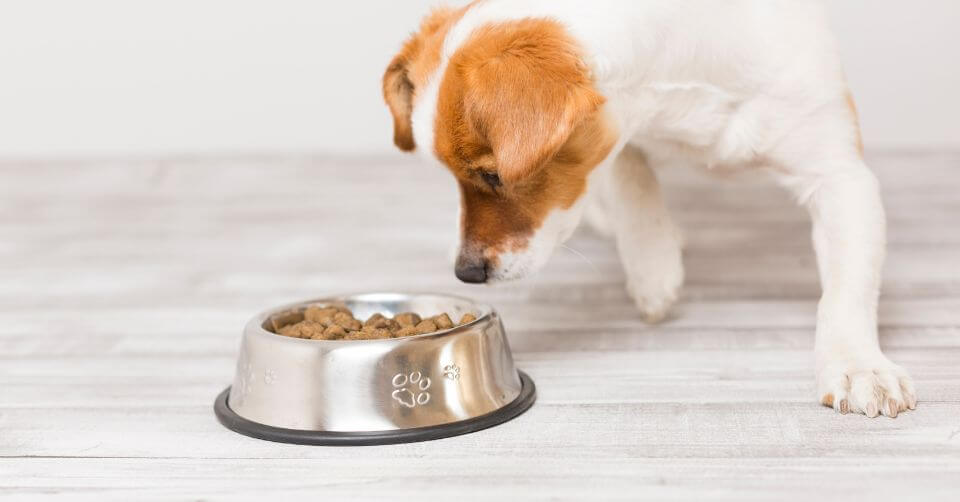
Recommended Products to Manage the Food Guarding Behavior in Dogs
Key Features
| The dispenser works remotely and can release treats from a distance. | |
| The product uses positive reinforcement to teach pets not to guard food. | |
| Suitable for both dogs and cats. | |
| Works with a variety of treat sizes and types. | |
| The dispenser is durable and easy to clean. | |
| Comes with a remote control and can operate from up to 25 feet away. |
Pros
| Helps in managing food aggression by reinforcing positive behavior. | |
| Allows for interaction from a safe distance./td> | |
| Can be used with any type of treats, making it flexible to your pet’s preferences. | |
| Easy to clean and maintain. |
Cons
| Can only be operated from a limited distance. | |
| The dispenser might not work well with larger or irregularly shaped treats. | |
| Your pet might become dependent on the dispenser for feeding. | |
| Some dogs might become more protective or possessive over the dispenser itself. |
Key Features
| The bowl has a maze-like design that slows down eating. | |
| Made from food-safe materials. | |
| Available in different sizes and colors. | |
| Can hold both dry and wet food. | |
| Dishwasher-safe on the top rack. | |
| Non-slip base to prevent sliding. |
Pros
| Slows down your pet’s eating speed, which can prevent food guarding. | |
| Helps in preventing bloat, obesity, and overeating. | |
| Easy to clean and maintain. | |
| The product’s non-slip base ensures it stays in place during feeding. |
Cons
| Some dogs might find the maze design frustrating. | |
| The bowl might not be suitable for dogs with short snouts. | |
| Not suitable for larger food pieces or chunky wet food. | |
| Over time, the dog may lose interest if it finds the bowl too challenging. |
Key Features
| The spray emits a hissing sound that interrupts unwanted behavior. | |
| Suitable for training dogs to stop food guarding, barking, jumping, and stealing. | |
| Comes in different sizes. | |
| Includes a training guide to help owners use the product effectively. | |
| Easy to carry and use. | |
| Uses compressed air, making it safe for pets. |
Pros
| Provides an immediate response to unwanted behavior. | |
| Easy to use and transport. | |
| Can be used for various types of training. | |
| The product is safe and doesn’t harm your pet. |
Cons
| Some dogs might become scared or anxious from the hissing sound. | |
| It’s a temporary solution and might not solve the underlying issue of food aggression. | |
| Overuse can lead to the dog becoming desensitized to the sound. | |
| It requires the owner’s presence and cannot be used remotely. |
Key Features
| Has a realistic fox tail that moves in and out, capturing your pet’s attention. | |
| Comes with a timer that can be set to turn on every 2 hours. | |
| Operates quietly so as not to scare your pet. | |
| Runs on batteries, making it portable. | |
| The toy is sturdy and durable. | |
| Can be used with both dogs and cats. |
Pros
| Can distract your dog from its food, reducing food guarding. | |
| Automatic timer ensures your pet is entertained even when you’re not around. | |
| Portable and can be used in different locations. | |
| The toy is durable and can withstand rough play. |
Cons
| Requires batteries to operate, which need to be replaced frequently. | |
| Some dogs might not be interested in the toy. | |
| Might not be suitable for larger dogs as they could easily destroy it. | |
| The product might become a new object of guarding for some dogs. |
Key Features
| Clicker-based training tool to encourage positive behavior. | |
| Comes with an easy-to-hold design. | |
| The tool is small and portable. | |
| Comes with a wrist strap for ease of use. | |
| Includes a training guide to help pet owners. | |
| Designed to make a distinctive clicking sound to mark desired behavior. |
Pros
| Helps in managing food aggression by reinforcing positive behavior. | |
| The distinct click sound provides immediate feedback to your pet. | |
| Portable and easy to use anywhere. | |
| Includes a guide to help new users understand clicker training. |
Cons
| Training your pet to understand the clicker might take time. | |
| Requires active involvement from the owner. | |
| May not work for pets with hearing problems. | |
| The sound might startle anxious dogs. |
Key Features
| Made from durable, pet-safe rubber. | |
| Can be filled with treats to encourage play. | |
| Comes in various sizes to suit different breeds and sizes of dogs. | |
| The toy has an erratic bounce to keep your pet engaged. | |
| Can be used for various types of play, including fetch. | |
| Dishwasher safe and easy to clean. |
Pros
| Distracts your dog during feeding times, reducing food guarding. | |
| Durable and can withstand heavy chewing. | |
| Can be filled with treats for extra engagement. | |
| Dishwasher safe, making it easy to clean. |
Cons
| Some dogs might be able to chew through the toy. | |
| The toy might become stuck under furniture due to its shape. | |
| Dogs may lose interest if they can’t get the treats out. | |
| It might not be suitable for very small or very large breeds. |
Key Features
| The toy dispenses food or treats during play, combining mealtime and playtime. | |
| The product’s unique design encourages interactive play. | |
| Made from durable, pet-safe materials. | |
| Comes in various sizes to suit different breeds. | |
| Can be filled with a variety of treats or kibble. | |
| Dishwasher safe on the top rack. |
Pros
| Combines feeding and play to distract from food guarding. | |
| Durable and designed to withstand strong chewers. | |
| The toy’s unique design keeps your pet engaged. | |
| Easy to clean and fill with treats. |
Cons
| Not suitable for very small or very large dogs. | |
| Some dogs might get frustrated if they can’t get the food out quickly. | |
| Hard to clean if not using a dishwasher. | |
| Some dogs might be scared by the toy’s noise. |
Key Features
| Double-ended lead for versatility. | |
| Comes in two lengths and three different widths. | |
| The lead is made from soft, padded material for comfort. | |
| Can be used for obedience training, including food aggression management. | |
| Provides control during walks and training. | |
| Durable and built to last. |
Pros
| Provides excellent control during training sessions. | |
| Soft and comfortable to hold. | |
| Durable and designed to withstand strong pulls. | |
| Versatile and can be used in different training setups. |
Cons
| The lead might be too long for small dogs or tight spaces. | |
| Requires active involvement from the owner. | |
| Not chew-proof. | |
| The clasp might be heavy for small dogs. |

